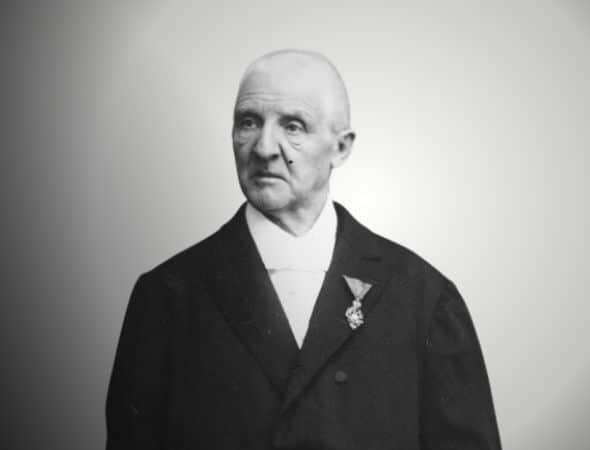BRUCKNER: Symphony No. 5
by Jeff Counts
THE COMPOSER – ANTON BRUCKNER (1824–1896) – Try to imagine the humblest, least sensational origin story for a composer, and then double down on the most underwhelming elements of it. With that, you are still only about halfway to the truth of Anton Bruckner. Here was a man so completely unburdened by providence and confidence, even obscurity seemed like something to which he must rise. That’s how it looks on paper, at least. But, as we now realize, hidden somewhere in the heart of this obsessive, life-long bachelor from the Austrian sticks was a thundering symphonic god of mythic proportions. It’s okay. He didn’t know it was in there either.

THE HISTORY – The move from tiny Sankt Florian to bustling Vienna in 1868 should have been the signal, to the world and to Bruckner himself, that he had arrived. But neither seemed to notice. Vienna was expensive and lonely for the composer, but he did manage to find new, moderately influential champions of his work. Enemies too, sadly, and there was nothing moderate about them. The powerful critic Eduard Hanslick was an early fan of Bruckner’s who turned vicious over the composer’s presumed anti-Brahms sensibilities. Bruckner wasn’t “anti” anyone, but his professed fascination with Wagner placed him firmly on one side of the progressive/conservative musical debate that raged throughout western Europe during the last half of the 19th century. Hanslick’s word was law for many in Vienna, so Bruckner suffered the consequences of his banishment in relative silence. For this and other reasons, renown evaded him for most of his life. But purpose did not. Bruckner was almost 40 years old when he received the advice to focus on the symphony genre as his principal mode of expression and, for the rest of his life, he rarely strayed from that path. Bruckner’s contribution to the genre, his legacy, is best measured in terms of scale. He tested the architectural limits of the symphony in ways Beethoven had predicted but left unresolved many decades earlier, and the massive Symphony No. 5 is a perfect example of Bruckner’s genius as a spatial acoustic innovator. With a vaulted volume to the music that magnified his religious faith, Bruckner stretched the time and distances of a concert hall like never before. It has become cliché to say it, but Bruckner’s music truly does sound like a cathedral looks. Symphony No. 5 was completed in 1876 but underwent revisions (a common practice for Bruckner) until 1878. It was the capstone of the highly productive symphony-writing period between 1873 and 1876 and the best built of his stunning sonic basilicas to that point. Bruckner referred to it as his “Fantastic” Symphony, but he was ill when it was finally premiered in 1894. He would never hear it performed.
THE WORLD – Elsewhere in 1878, Bulgaria gained her independence from the Ottoman Empire as part of the Treaty of Berlin, the Cleopatra Needle (Egyptian obelisk) was erected in London and Umberto I became King of Italy.
THE CONNECTION – Bruckner’s Symphony No. 5 has never been performed by the Utah Symphony.











